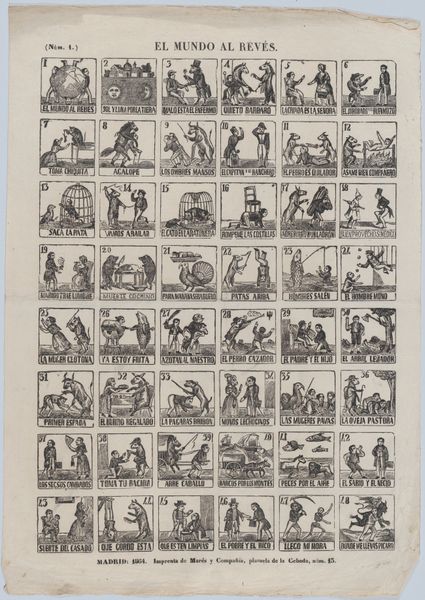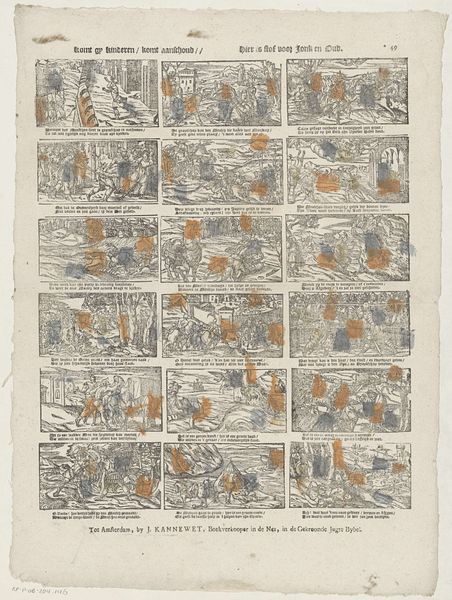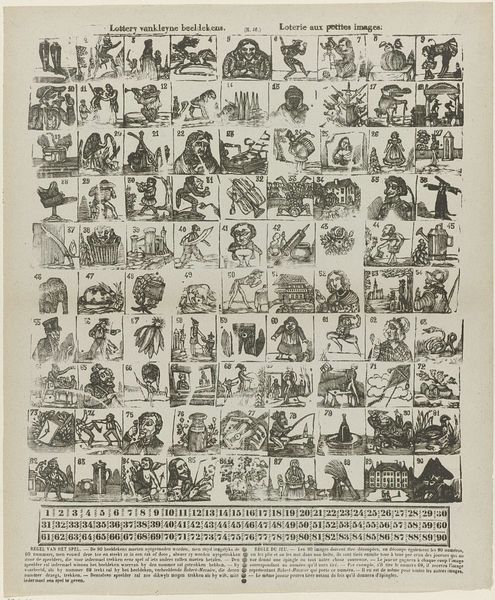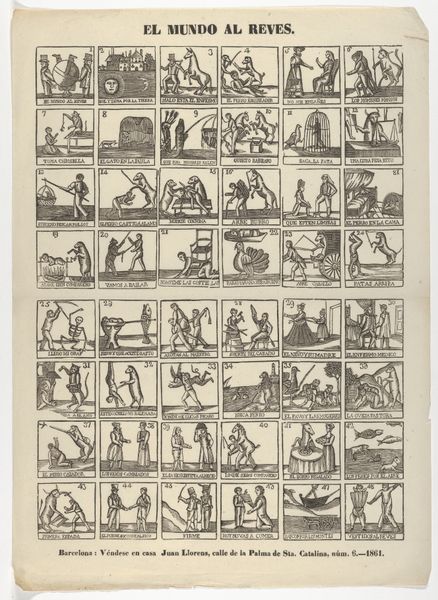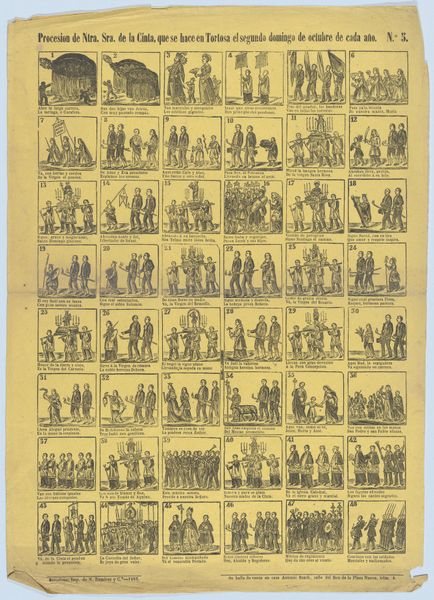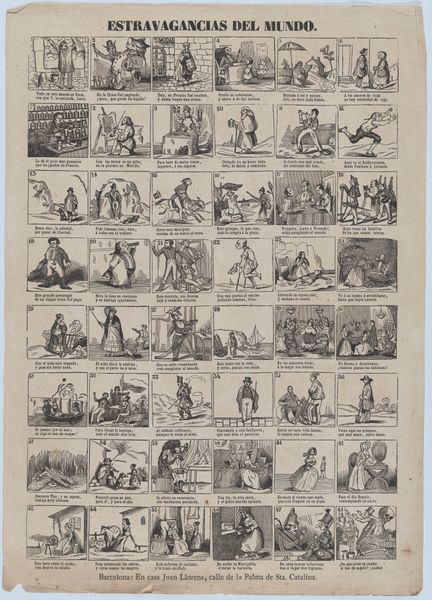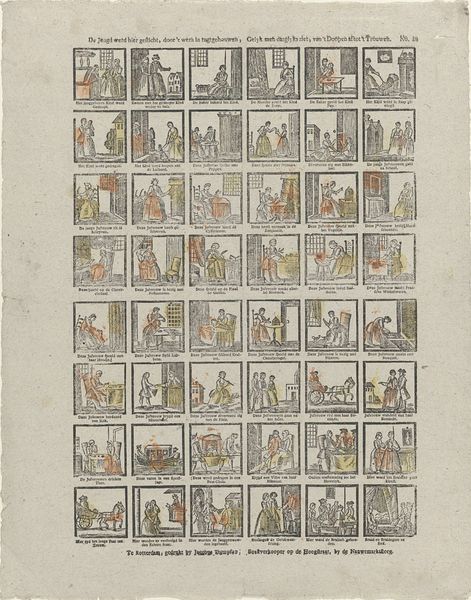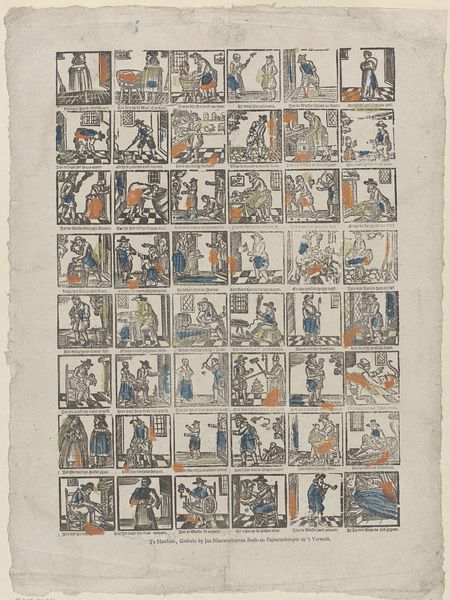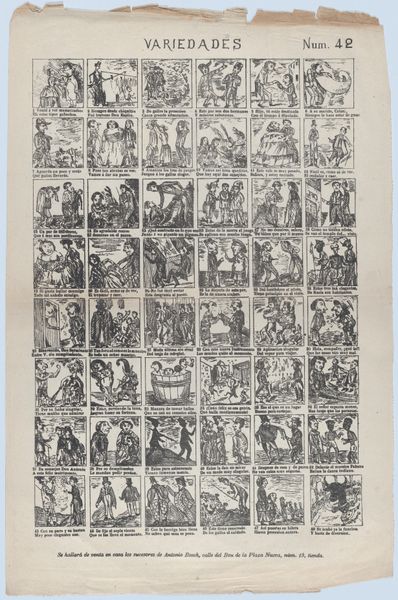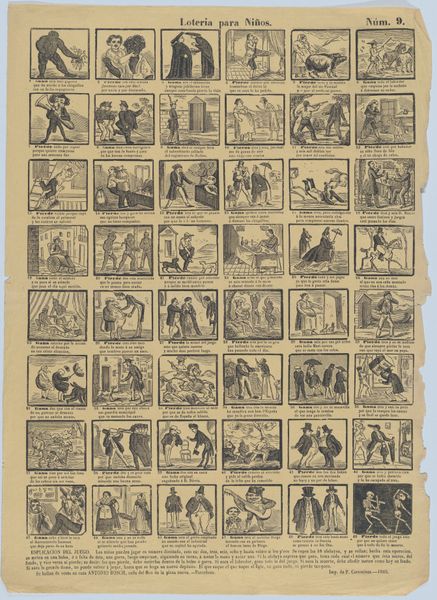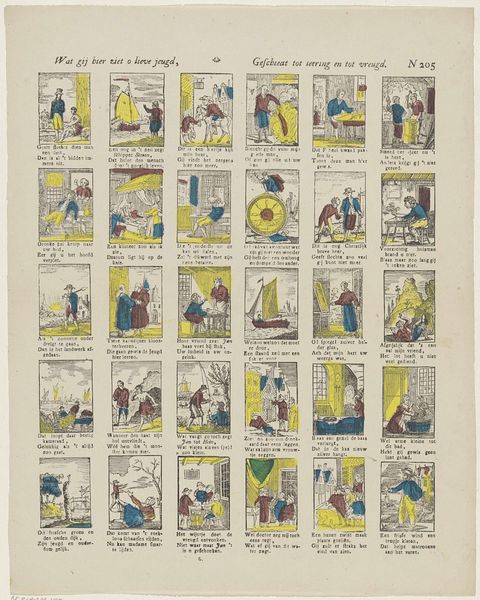
graphic-art, print, etching
#
graphic-art
# print
#
etching
#
folk-art
#
monochrome
Dimensions: height 399 mm, width 325 mm
Copyright: Rijks Museum: Open Domain
This lottery sheet was printed by Glenisson & Zonen, and features a gridded array of small, numbered images. It's made using a printing technique called lithography, where the design is drawn on a stone or metal plate, treated to retain ink, and then pressed onto paper. The lithographic process allowed for the relatively quick and inexpensive reproduction of images, making printed materials more accessible to a wider audience. Here, we see simple, graphic depictions of everyday objects, people, and animals, each assigned a number for the lottery game. The somewhat naive style of the illustrations, combined with the mass-produced nature of the sheet, speaks to a shift in the art world, where printed ephemera became more common. Consider how this object differs from a hand-painted artwork. The lithograph's value lies not in its uniqueness, but in its replicability, and its role as a tool for entertainment and participation. By embracing industrial methods, the Glenisson firm blurred the lines between art, commerce, and leisure.
Comments
No comments
Be the first to comment and join the conversation on the ultimate creative platform.

